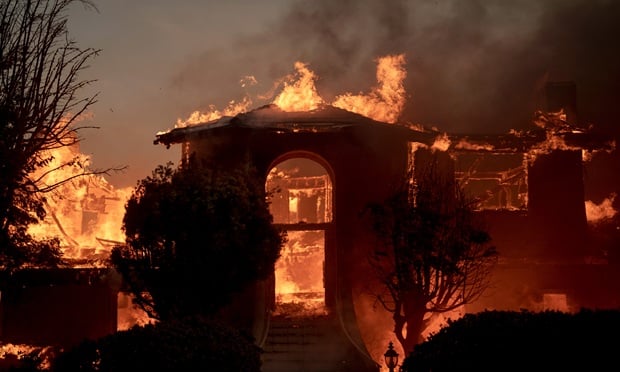Have you ever picked up a claims file and scratched your head as to how the adjuster arrived at their liability decision? Having run a quality assurance department for a large multinational insurer, I can say with certainty I've been in that position more than once.
Consider scenarios involving intersection accidents, parking lots, lane changes, slip and falls or product defects where liability is simply assessed at 100 percent with little to no discussion on duties owed and breached. Then consider the financial impact that improper liability assessment can have on claim settlement accuracy or policy holder retention.
Doing some simple math in the auto market , let's say, on average, an insurer is assessing comparative negligence in 5 percent of all cases. While seemingly a low figure, I am told by a number of top executives that real comparative negligence assessment is often even less.
Let's also consider that according to Jury Verdict Research, a national organization that tracks such data, rear end auto accidents, or clear liability losses, accounted for only 45 percent of auto cases adjudicated, with the remainder comprised of intersection collisions, lane changes, chain reaction and parking lot scenarios. In other words, a lot of claims where there was a high probability of shared liability.
Having worked with a large number of insurers on accuracy improvement projects, such as liability, achieving 35-percent comparative negligence assessment in pure comparative states has proven to be a reality. For modified comparative states, this figure is in the 25-percent range and contributory states drops to about 12 percent. Further evidence of this potential opportunity area can be derived from more formulaically driven jurisdictions, such as Japan, where comparative negligence is routinely assessed about 35 percent of the time.
If the average assessment is 50/50 on 5 percent of all claims with an average payment of $2800, the benefit derived is $70,000 per 1,000 claims processed. Keeping the average comparative assessment at 50/50, assessing comparative at an optimal level of 35-percent increases accuracy by $490,000, or an improvement of $420,000 per 1000 claims processed. Multiplying this out by actual claims processed can show a tremendous opportunity for accuracy improvement, often to the tune of tens of millions of dollars per year.
Of course not all comparative claims will be settled at 50/50; some will be 80/20 in favor of the insured, others 60/40 in favor of the claimant. What we do know is that seeing more shared liability is an opportunity nearly universally available to all insurers, both domestically and in many nations abroad.
The challenge is for carriers to identify this as an opportunity area and then determine the best ways to seize upon improvement, as it is easier said than done. The first challenge is to measure currently performance. How does your carrier stack up against the industry? The reality is that even within one's four walls there may be significant disparity between regions, offices and units.
In one particular instance I was involved with, there were two offices in California not more than twenty miles apart. Both were assessing comparative negligence about 3 percent of the time. After implementing a liability assessment improvement strategy, office A improved to 42 percent while office B improved to 11 percent. Why the disparity in a similar geographic area?
Much of it was driven by internal management and adjusting philosophy. In one office, the concept of comparative fault was embraced. If the other, then there was a fear of increased attorney representation and litigation, neither of which was occurring in either location.
Claim volume can often be an impediment to improvement, as identifying comparative negligence and successfully arguing it can take more time than simply paying 100 percent. After all, adjusters are busy.
To truly be effective, the concept of accurate liability assessment has to become part of the corporate culture. From the outset of claim training, adjusters need to be indoctrinated into the thought process that liability is a key element of each and every claim. After all, to effectively pursue a claim one must prove both damages and liability
Integrating proven resources can assist in the development of this philosophy as they provide consistent feedback and reporting that enables management to look for coachable moments. They can also provide the most effective roadmaps for successfully negotiating liability settlements.
Considering juries across the nation assess comparative fault more than half the time, there is no reason that our own “experts” can't move the ball closer to the goal line. The key is to give them the tools by which to effectively do so.
Christopher Tidball is an executive claims consultant and author of multiple books including Re-Adjusted: 20 Essential Rules To Take Your Claims Organization From Ordinary To Extraordinary! He is an industry veteran have worked in various adjusting, management and executive capacities for multiple top 10 claims organizations. To learn more, visit www.christidball.com or e-mail [email protected].
Want to continue reading?
Become a Free PropertyCasualty360 Digital Reader
Your access to unlimited PropertyCasualty360 content isn’t changing.
Once you are an ALM digital member, you’ll receive:
- Breaking insurance news and analysis, on-site and via our newsletters and custom alerts
- Weekly Insurance Speak podcast featuring exclusive interviews with industry leaders
- Educational webcasts, white papers, and ebooks from industry thought leaders
- Critical converage of the employee benefits and financial advisory markets on our other ALM sites, BenefitsPRO and ThinkAdvisor
Already have an account? Sign In Now
© 2024 ALM Global, LLC, All Rights Reserved. Request academic re-use from www.copyright.com. All other uses, submit a request to [email protected]. For more information visit Asset & Logo Licensing.








